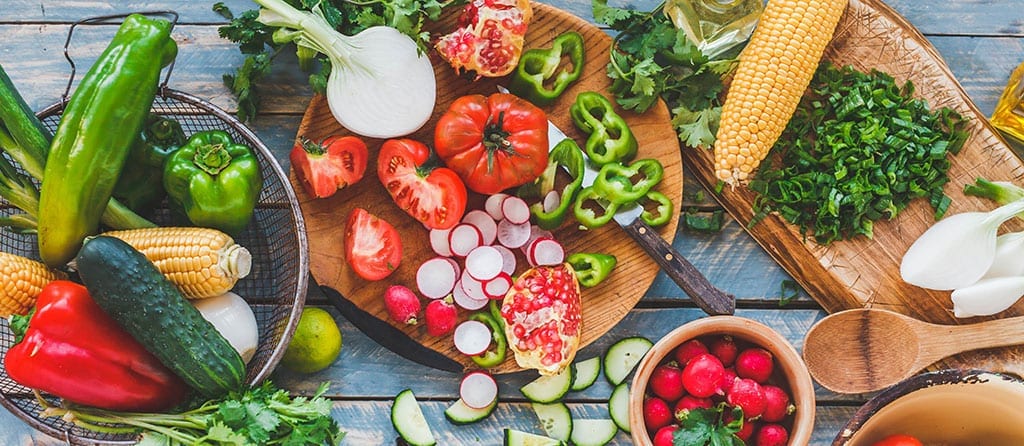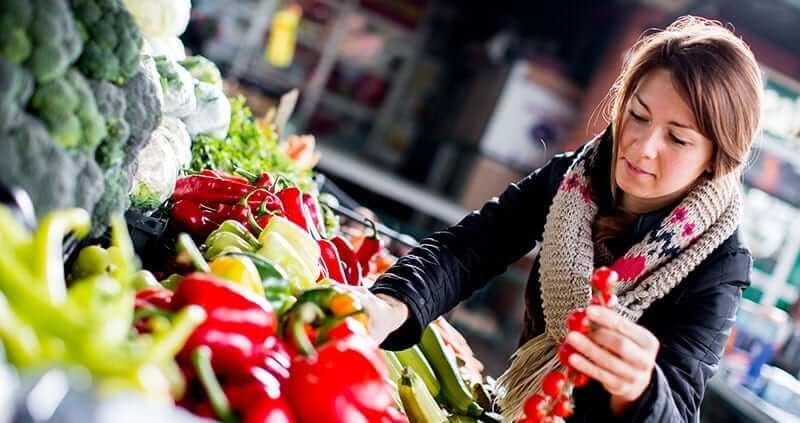According to a small study done on humans, broccoli extract was given along with Metformin, or a placebo was given with Metformin, to those with out of control diabetes (i.e. A1C levels above 7.4). The patients who received the broccoli extract were able to bring down their blood sugars as opposed to those given the placebo. The actual ingredient that created this lower blood sugar response is sulforaphane, which is found in all cruciferous vegetables such as cabbage, horseradish, Brussel sprouts, cauliflower, broccoli and broccoli sprouts. It is an organic, sulfur compound phytochemical that is already known to decrease inflammation and reduce cancer but now is being studied for benefits to those with type 2 diabetes. Newly uncovered information states sulforaphane has the ability to also improve gut bacterial flora which may have ties to diabetes. The current problem is, you would need to eat 5 or more pounds of broccoli to receive all the benefits. The thinking at this point is “no one food can regulate glucose (even broccoli) but eating more vegetables can be beneficial from multiple viewpoints including diabetes.” Although vegetables can be taken in pill or capsule form, “whole foods are always preferred over pill supplements for nutrients and true health benefits” – according to nutritional professionals.
Another interesting study was done at Stanford University in California. It was found that when people see words indicating “healthy choices” they often assume the food will be unappealing, bland or tasteless. Words like “light, no-sugar added, and no fat added or healthy” may also be extremely confusing. In this study, the vegetables were cooked in exactly the same way, were labeled in four different ways to see if “words can translate into choices.” When vegetables were given new and exciting explanations more people chose that specific vegetable. The labels were 1. Basic – green beans, 2. Healthy/restrictive – light green beans, 3. Healthy/positive – energy boosting green beans and 4.Indulgent – sweet, sizzling green beans. All vegetables including carrots, beets and onions labeled with “indulgent “were chosen the most even though they had the same preparation.
A recent meta-analysis suggests “greater consumption of fruits and vegetables were consistently associated with improved mental health”. The evidence also showed a “lower prevalence of psychological stress”. Not only have vegetables been shown to improve physical health but also now stress and mental health.
According to research conducted by Frontiers in Nutrition, “A flexitarian diet which primarily consists of vegetables but allows meat, chicken, eggs, dairy and fish occasionally, shows evidence that it improves body weight, metabolic health, blood pressure and reduces the risk of type 2 diabetes”. 50% of the diet should come from fruits and vegetables in a Flexitarian diet. This is “why there is so much fuss over vegetables”.
Summer season provides ample local produce, with pop up Farmer’s markets appearing in every big city and small town. They have cheaper prices, more choices with higher quality products. Consider planting your own summer garden or even a wall box garden if you have limited space. Hang tomato plants on your patio. Plant a small herb garden in tiny pots in your kitchen. Vegetables are full of fiber which helps regulate blood sugars and keeps you full for a longer time. Women need 28-30 grams and men need 30 grams of fiber daily. The average American eats 15 grams or less daily. Eating vegetables will easily up your recommended amount of fiber. Make sure to increase water intake since fiber absorbs water. Also, raise fiber amounts slowly since they may cause stomach issues such as gas and bloating early on.
Vegetables can be grouped in different ways. They can be grouped by botanical family. They can be grouped by root, stem or flower. Root group would include beets, carrots, sweet potatoes, turnips and others. Stem group would include asparagus, chard, fennel or celery. Flower group would include cucumber, pumpkin or tomato. Vegetables can also be grouped by color. Dark greens are kale, spinach, mustard or collard greens and they contain anti-oxidants, calcium, iron and lutein. Greens are great for bone, eye, and brain and skin health. Red and orange includes sweet potatoes, acorn or butter nut squash, carrots and red or orange peppers. The red and orange group help lower heart disease, inflammation and cancer risk. Beans and peas can be found in many different varieties such as kidney beans, black beans, navy beans, pinto beans, cannellini beans, garbanzo beans, split peas and lentils. These are high in protein and fiber, filling and full of zinc and iron. Lentils are underutilized in the American diet. They are inexpensive, available all year, easy to season and add to stews, soups or casseroles. Lentils cook faster than beans and do not need to be soaked overnight. Beans and peas are considered carbohydrates and must be kept to proper portion size since they will elevate blood sugars. Starchy vegetables including corn, white potatoes and green peas also count as carbohydrates (15 grams per serving size) and they can be included as “part of a complete diet” since they contain folate, potassium and vitamin C. Other vegetables would include garlic, tomatoes, asparagus, mushrooms, green beans, etc. The thought is, “it doesn’t really matter how you group vegetables as long as they become part of your daily diet”. If you do not eat vegetables, make a commitment to add them to your daily diet and if you do eat vegetables, increase the frequency and varieties. Work your way up to 4-5 cups a day for best results.
Ideas to increase your vegetable intake which should have a positive impact on your diabetes control:
- Change out homemade white potato fries or wedges with sweet potato or butternut squash fries or wedges. Preheat oven to 425 degrees. Add wedges or fries to a plastic bag with a tablespoon of olive oil and shake. Place on cookie sheet and add a dash of pepper and sea salt. Cook for 25 minutes until browned and crispy. Three tablespoons of butternut squash count as one serving of a vegetable.
- Change out white pasta for zucchini, beet, and carrot or summer squash vegetable spirals. There are tools called “spiralizers” or you can simply use a vegetable peeler to make strings or noodles from veggies. For a splurge, you can also treat yourself to pre-packaged spiral veggies. Often called zoodles (zucchini), boodles (beets) or coodles (carrots). These vegetables will fill you up when covered in a fresh, homemade tomato sauce or a low sugar/reduced sodium store bought variety. Top with onions, garlic, oregano and parsley for a perfect summer meal. You can serve them hot or cold in a salad. Add oil and vinegar to the salad to absorb all the nutrients from the vegetable spirals.
- Substitute mashed avocado spread for mayonnaise. Lose the saturated fat and calories and increase your mono-unsaturated fats to lower your LDL. Mash 1/2 an avocado and spread on sprouted whole grain toast for breakfast. Use as a spread on sandwiches since avocado is high in vitamin E and full of taste.
- Change out sticky, white rice for cauliflower rice. Cauliflower rice is found in the freezer section of most stores. It has the same texture as white rice without the calories and starch. It is much. friendlier for someone with diabetes. Plus, it has vitamin C, fiber, folate and potassium. It can be substituted in any recipe.
- Substitute regular, white, processed flour pizza dough for cauliflower pizza dough. Mash the par boiled or frozen/thawed cauliflower, add 2-3 egg whites, Parmesan cheese, low fat Mozzarella cheese, form into pizza shape and bake on pizza brick at 450 for 20 minutes. Add more vegetable toppings such as mushrooms, fresh tomato slices and garlic for a delicious and fresh meal. By eating a cauliflower dough pizza, you add fiber and will protect your blood vessels and blood flow.
- Change out instant, boxed, white mashed potatoes with fresh, mashed sweet potatoes or acorn squash mash. Add a dash of reduced calorie maple syrup and a pinch of cinnamon for a sweet and wholesome flavor.
- Substitute sour cream/onion dip or other creamy dips with corn or potato chips for tomato salsa dip with red and green pepper slices. You will reduce the saturated fat content and add lycopene from the tomatoes. Lycopene is excellent for your vision. Chop up fresh tomatoes, onions, garlic, lime juice and a fresh jalapeno, if you prefer it spicy, and serve cold.
- Change out a store bought fruit smoothie with tons of sugar and calories and make a homemade green smoothie. Blend kale, spinach, celery, parsley, cucumber, lemon, ginger and green apple. You will be getting lots of vegetables in one easy drink.
- Change out creamy soups for black bean, split pea, lentil, tomato or vegetable soup. If you really miss the creamy texture you can add a dollop of plain Greek yogurt to the soup. You will have less fat and calories with a yummy taste and added fiber.
- Change out a beef burrito in a flour tortilla covered in cheesy sauce for a bean burrito in a corn tortilla covered in shredded lettuce, tomato, red onion and sliced avocado. You will add fiber and taste with less calories and saturated fat.
- Substitute greasy, deep fried, salty store bought chips for homemade vegetable chips. Any vegetable can be sliced thin like kale, baby tomatoes cut in half or whole chick peas. Place on sheet with 1-2 tablespoons of olive oil and a pinch of pink Himalayan salt, bake at 425 until crispy. These will be cheaper, more flavorful and offer no ill effects.
- Make stuffed red, green, yellow or orange peppers by adding lentils, beans, walnuts and mushrooms for a meaty taste with less fat and lots of fresh flavor instead of stuffed peppers with sausage and meat covered with cheese.
- Change out your evening high calorie munch foods for Edamame. You may find them fresh but you will find them in the frozen food section. Edamame are immature soybeans that contain protein, fiber, amino acids, calcium, iron, zinc, copper and manganese. They are a nutritional powerhouse. Edamame are good for bone health, cardiovascular health and contain all 9 amino acids.
- Chop up and add fresh and exotic mushrooms, carrots and onions to your burger mix. You will stretch the meat and add nutrients and flavor to your backyard BBQ.
- Use lettuce leaves such as arugula, romaine, iceberg or spinach to wrap tuna, chicken or egg salad instead of a 12 inch hoagie roll. Your blood sugar and waist line will thank you!
Summer is here with so many choices of fresh vegetables from your local farms. Try something new and incorporate them in your everyday meals. You will enjoy great flavor and lots of health benefits!
Have a question or comment? Then post below, no registration required. I would love to hear from you!
NOTE: Consult your Doctor first to make sure my recommendations fit your special health needs.








Leave A Comment